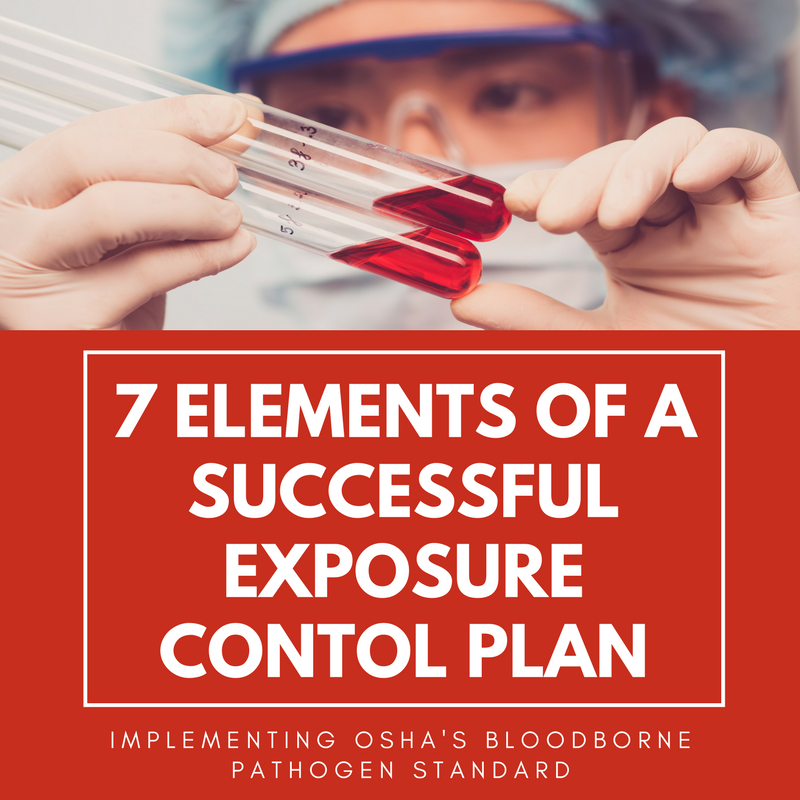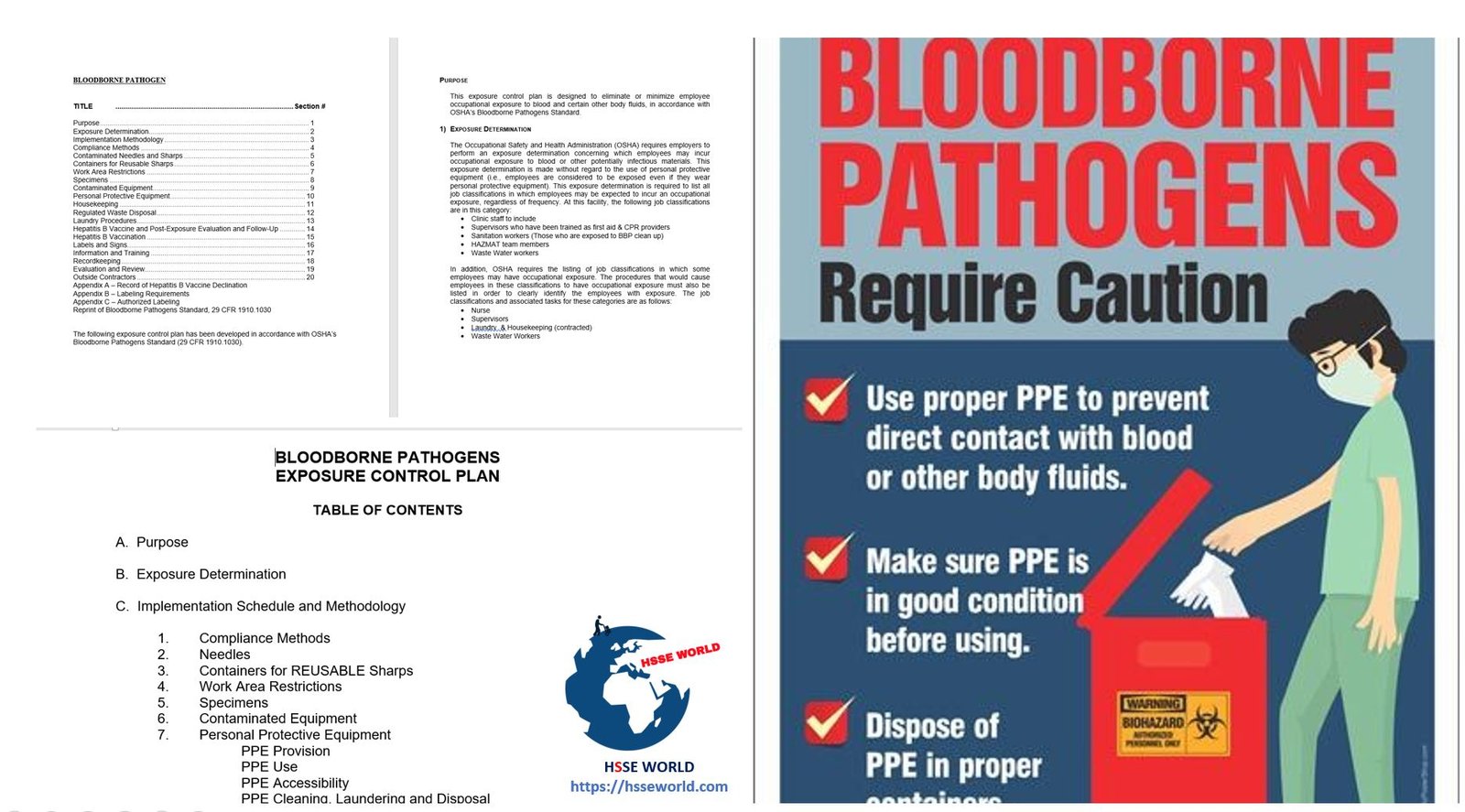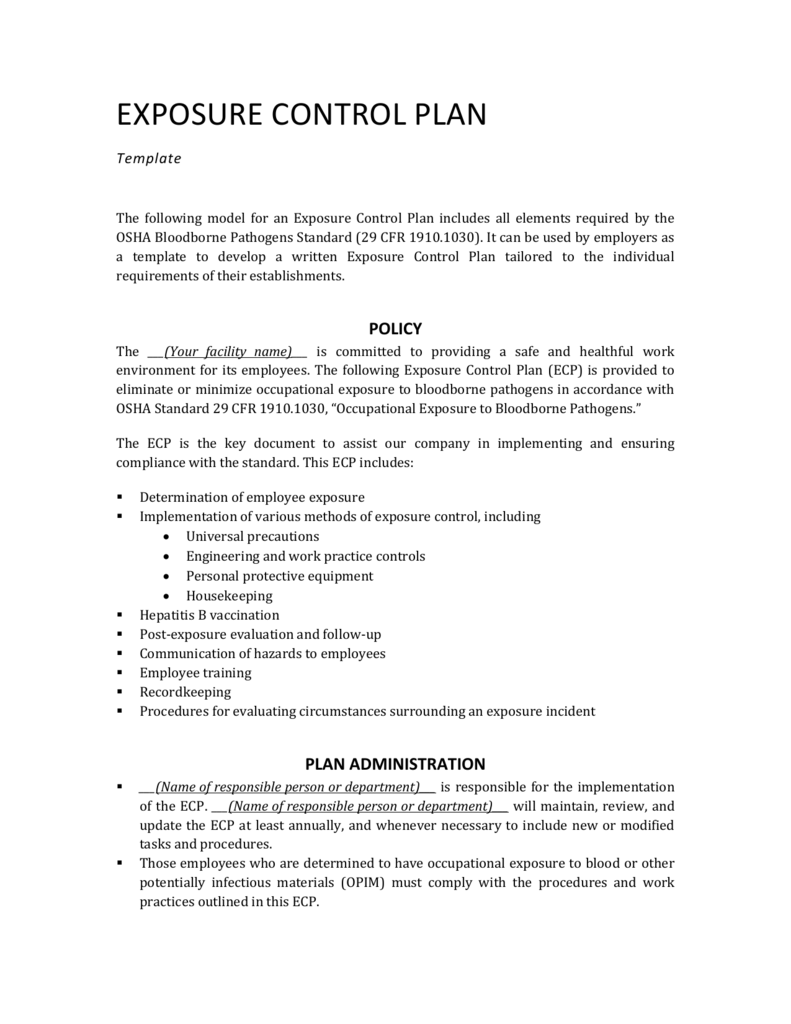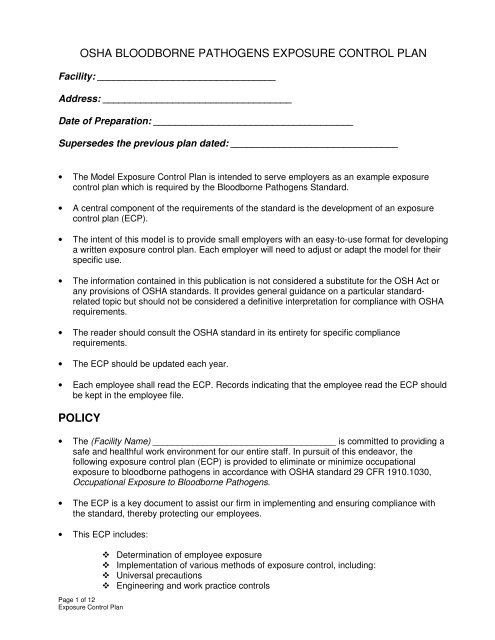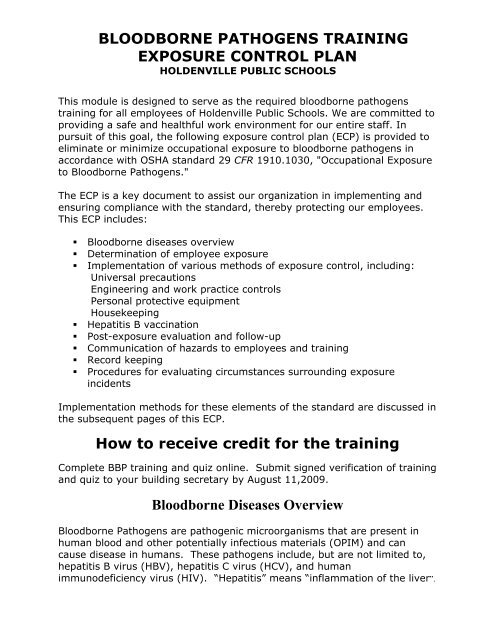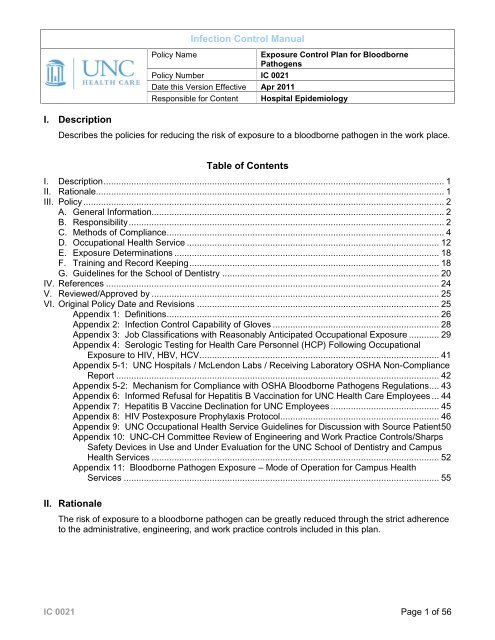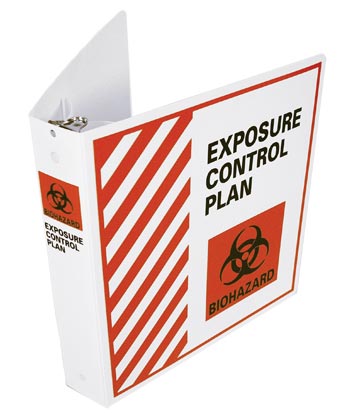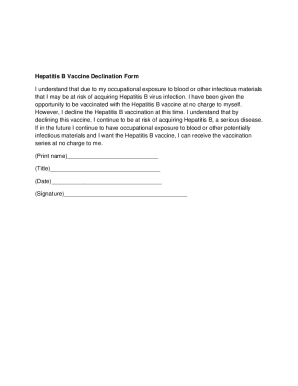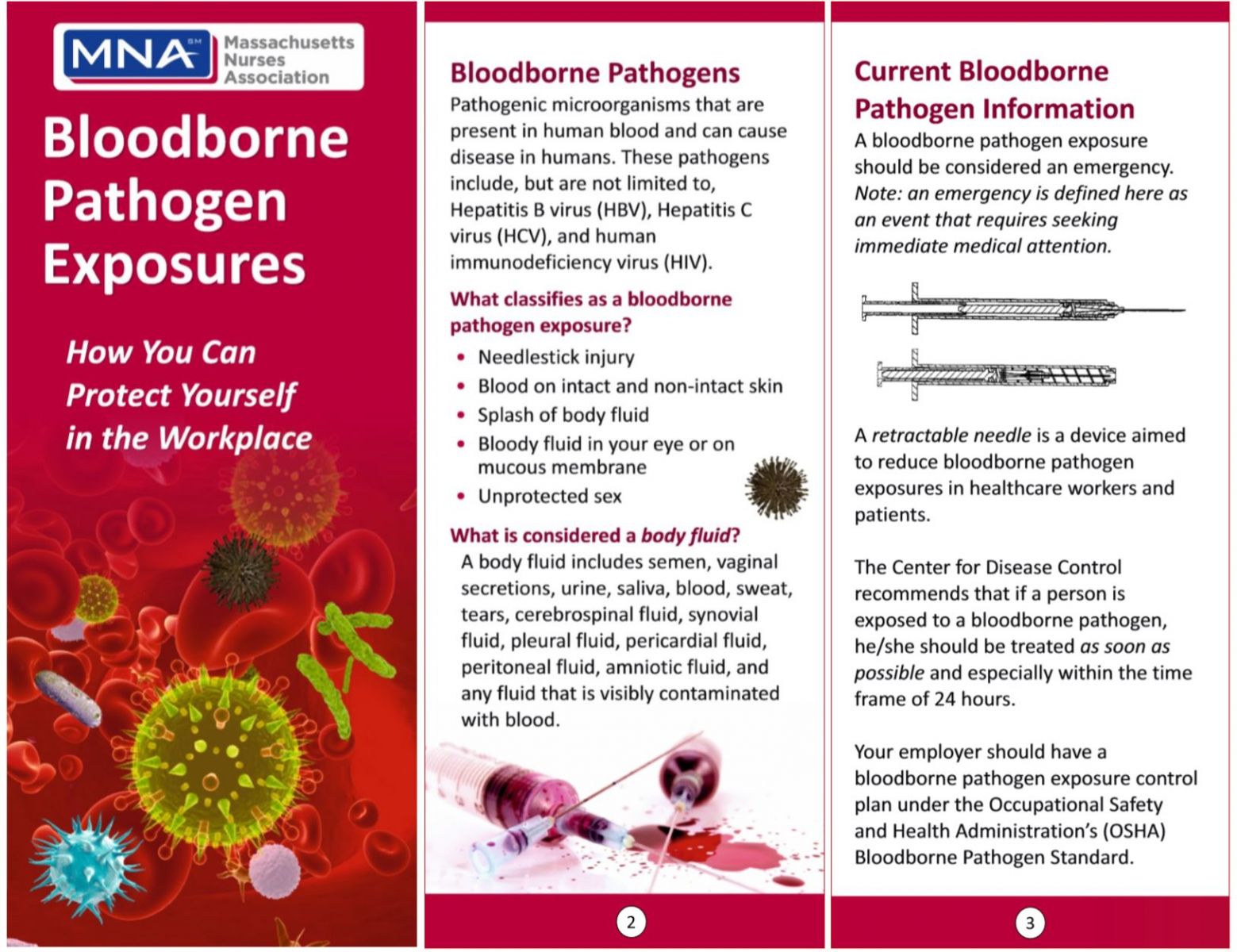Bloodborne Pathogens Exposure Control Plan
Any employee who could reasonably anticipate coming in contact with bloodborne pathogens as part of their job duties are covered by this standard.
Bloodborne pathogens exposure control plan. The plan must also describe how an employer will use engineering and work practice controls personal protective clothing and equipment employee training medical surveillance hepatitis B vaccinations and other provisions as required by OSHAs Bloodborne Pathogens Standard 29 CFR 19101030. The purpose of this designed model is to offer smaller employers a functional and practical way to implement an exposure control plan in writing in a simple format. Blood-borne pathogens exposure plan should inform the employees actions that they should take to prevent exposure to infectious diseases.
It is designed to comply with the standards enunciated by the United States Department of Labor Occupational Safety and Health Administration OSHA in Part 19101030 Title 29 of the Code. Exposure control plan as is required under the Bloodborne Pathogens Standard. 30 SCOPE AND APPLICATION The following text is a written description of the University of Arizonas Exposure Control Plan.
Engineering controls are the primary means of eliminating or minimizing. Goal the following exposure control plan ECP is provided to eliminate or minimize occupational exposure to bloodborne pathogens in accordance with OSHA standard 29 CFR 19101030 Occupational Exposure to Bloodborne Pathogens The ECP is a key document to assist our organization in implementing and ensuring compliance with the standard thereby. PURPOSE One of the major goals of the Occupational Safety and Health Administration OSHA is to promote safe work practices in an effort to minimize the incidence of illness and injury experienced by employees.
This exposure control plan or ECP is a vital component of the specific requirements of this standard. Safety Violations Hotline 1-800-452-9595 safetyhotlinetdistatetxus. About the U-M Bloodborne Pathogens Exposure Control Plan University of Michigan is an employer with various groups of employees who have a reasonably anticipated risk of exposure to human blood and other potentially infectious materials when performing their required.
This plan must be made available to every employee within. This Bloodborne Pathogens Exposure Control Plan ECP has been developed as part of the Weill Cornell Medicine WCM Environmental Health and Safety EHS Program Manuals. Its purpose is to.
B Supervisors must determine whether an employee is. EXPOSURE TO PATHOGENS The Occupational Safety and Health Administration OSHA regulates exposure to bloodborne pathogens and has developed a Bloodborne Pathogen Exposure Control standard. In addition the training program will include the following topics.
The requirement of the control plan is explained in OSHAs Blood-borne Pathogens Standard 29 CFR Part 19101030. The objective of this Bloodborne Pathogens Exposure Control Plan is to comply with the Occupational Safety and Health Administrations Bloodborne Pathogens Standard 29 CFR 19101030 and to eliminate or minimize employee occupational exposure to blood certain other bodily fluids or other potentially infectious materials. Bloodborne Pathogen Exposure Control Plan 41 Exposure Determination a All employees who may reasonably be anticipated to be at risk for exposure to human blood body fluids or OPIM are included in this plan and must be offered the hepatitis B vaccine and must be retrained annually in infection control.
Bloodborne Pathogens Exposure Control Plan INTRODUCTION This Bloodborne Pathogens Exposure Control Plan is adopted in accordance with the Texas Health and Safety Code Chapter 81 Subchapter H and analogous to the OSHA Bloodborne Pathogens Standard. Pursuant to Section 101055 Stats. Updated February 2020 Bloodborne Pathogens Exposure Control Plan Page 1 Bloodborne Pathogens Exposure Control Plan I.
Bloodborne pathogens exposure control plan 6. It is a procedural manual pertaining to infection control and biohazard safety at The University. Bloodborne Pathogens Exposure Control Plan Self-Audit Checklist The Texas Department of InsuranceDivision of Workers Compensation TDI-DWC E-mail resourcecentertdistatetxus or call 1-800-687-7080 for more information.
The Occupational Safety and Health Administration OSHA Standard 29 CFR 19101030 Bloodborne Pathogens Standard adopted by Virginia Occupational Safety and Health VOSH was issued in 1991 to reduce the occupational transmission of infections caused by microorganisms. The following persons is responsible for implementation and review of the Exposure Control Plan. In accordance with the Occupational Safety and Health Administration OSHA Bloodborne Pathogens Standard 29 CFR 19101030 see Appendix A the following exposure control plan has been developed.
All employees who have occupational exposure to bloodborne pathogens receive training on the epidemiology symptoms and mode of transmission of bloodborne pathogen diseases. Bloodborne Pathogens Exposure Control Plan. Training and training records.
Blood-borne Pathogens Exposure Control Plan.
